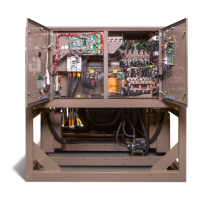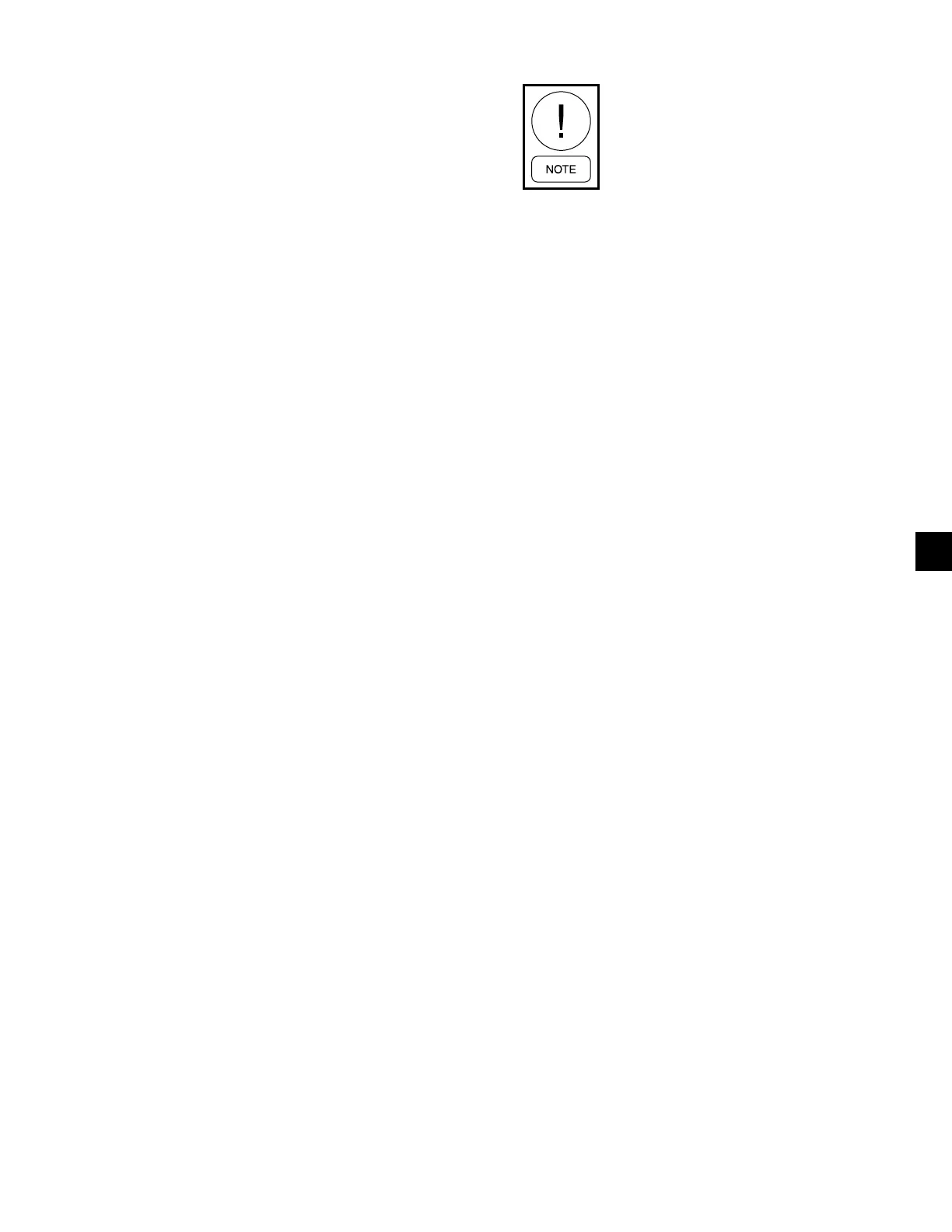SECTION 9 - MAINTENANCE
JOHNSON CONTROLS
173
Form 201.47-ICOM1
Issue date: 17/11/2022
9
Microchannel coil cleaning
Regular cleaning is an essential part of maintaining the
integrity and heat transfer properties of heat exchang-
ers. Failure to follow cleaning guidelines can result in
heat exchanger damage, including leaks or loss of per-
formance. The cleaning procedures described in this
document are required to maintain the warranty of the
condenser coils.
Microchannel coils tend to accumulate less dirt inside
the coils than on the surface, which makes them easier
to clean than conventional round tube and fin coils.
The reduced depth and parallel tube layout of micro-
channel heat exchangers minimize the restriction of
cleaning water through the heat exchanger. This pro-
vides a shorter and more direct path for cleaning water
to effectively carry away dirt and debris during regular
maintenance. During the cleaning process, care must
be taken to avoid damage to the coils and the protective
coatings. The following care points must be followed
during cleaning:
• DO NOT use high pressure water, such as a pres-
sure washer, to clean the coils. High pressure wa-
on the coil.
• DO NOT contact the coil with a hard object such
as a hose nozzle, hard vacuum nozzle or any other
tool. Hard objects or tools can cause mechanical
damage to the coil material and protective coat-
ings on the coil.
• DO NOT use caustic or acidic cleaning solutions
on coils. Only use cleaning solutions approved by
Johnson Controls.
The required cleaning procedure is different depend-
ing on the type of coil and protective coating supplied
with the coil. This document describes the proper pro-
cedures to maintain the integrity of each type of coil.
Cleaning procedure required for standard and
environment guard microchannel coils
Standard and Environment Guard microchannel coils
must be cleaned following this procedure at least once
per quarter (every 3 months) to ensure that the integ-
rity of the coils and the warranty of the coils are main-
tained. In environments where coils become heavily
fouled or there are high levels of pollution or corrosive
elements, a monthly frequency of cleaning is recom-
mended. Refer to the Johnson Controls Microchannel
Heat Exchanger Application Guide (Form 150-12-
AD1) for further details on the classification of pol-
luted and corrosive environments.
Standard and Environment Guard coils
are grey/silver in color.
Step 1: Remove surface debris such as dirt, leaves, in-
sects, or fibers with a vacuum cleaner having a soft
brush attachment. When brushing debris off the face
of the coil a soft bristle brush (not wire) can also be
used. Do not scrape the coil with the vacuum nozzle,
air nozzle, or any other hard tool.
Step 2: Rinse the coil with potable tap water. Use a
gentle spray from a spray nozzle with a plastic end.
Do not contact the coil with the hose nozzle. Rinse the
coil by running water through every passage in the heat
exchanger surface until it is clean.
Step 3: Apply a coil cleaning solution approved by
Johnson Controls. Johnson Controls approves the use
of RectorSeal brand GulfCleanTM coil cleaner, or
equivalent, on microchannel coils. Coil cleaning solu-
tion is available from Johnson Controls Aftermarket
Parts Centers in all global regions. Mix the correct
amount of cleaner solution and water in accordance
with the manufacturer’s directions on the container.
Use a hand-held pump sprayer to apply the mixed
cleaner solution on the coils. Ensure that the entire sur-
face of the coils is wetted with the solution. Allow the
cleaning solution to remain on each of the coils for ap-
proximately 10 mins.
Step 4: Repeat the water rinse as described in Step 2 to
remove the cleaning solution.
Step 5: It is important to remove any excess water
trapped in the coils immediately after the final water
rinse. The condenser fans on the chiller can be run after
the final water rinse to properly dry the coils. Any ex-
cess water can also be removed by blowing air through
the coils with a hand-held blower or vacuum
Cleaning procedure for environment guard
premium microchannel coils
Environment Guard Premium microchannel coils must
be cleaned following this procedure described below
at least once per quarter (every 3 months) to ensure
that the integrity of the coils and the warranty of the
coils are maintained. In environments where the coils
become heavily fouled or where there are high levels
of pollution or corrosive elements a monthly cleaning
procedure using steps 1, 2, and 7 below is recommend-
ed, in addition to the quarterly cleaning using steps

